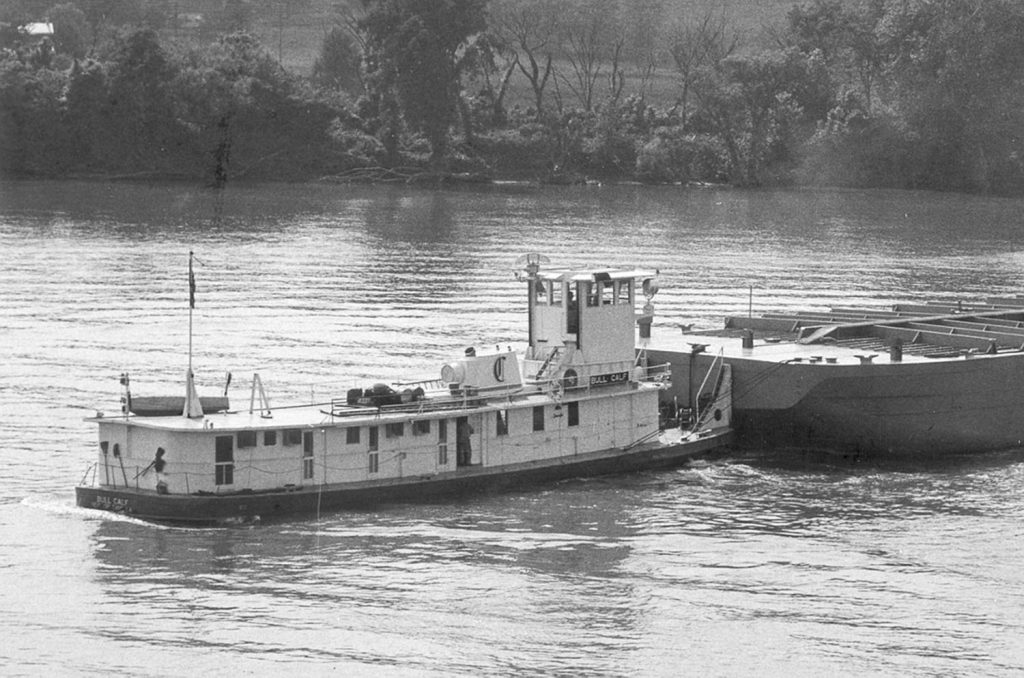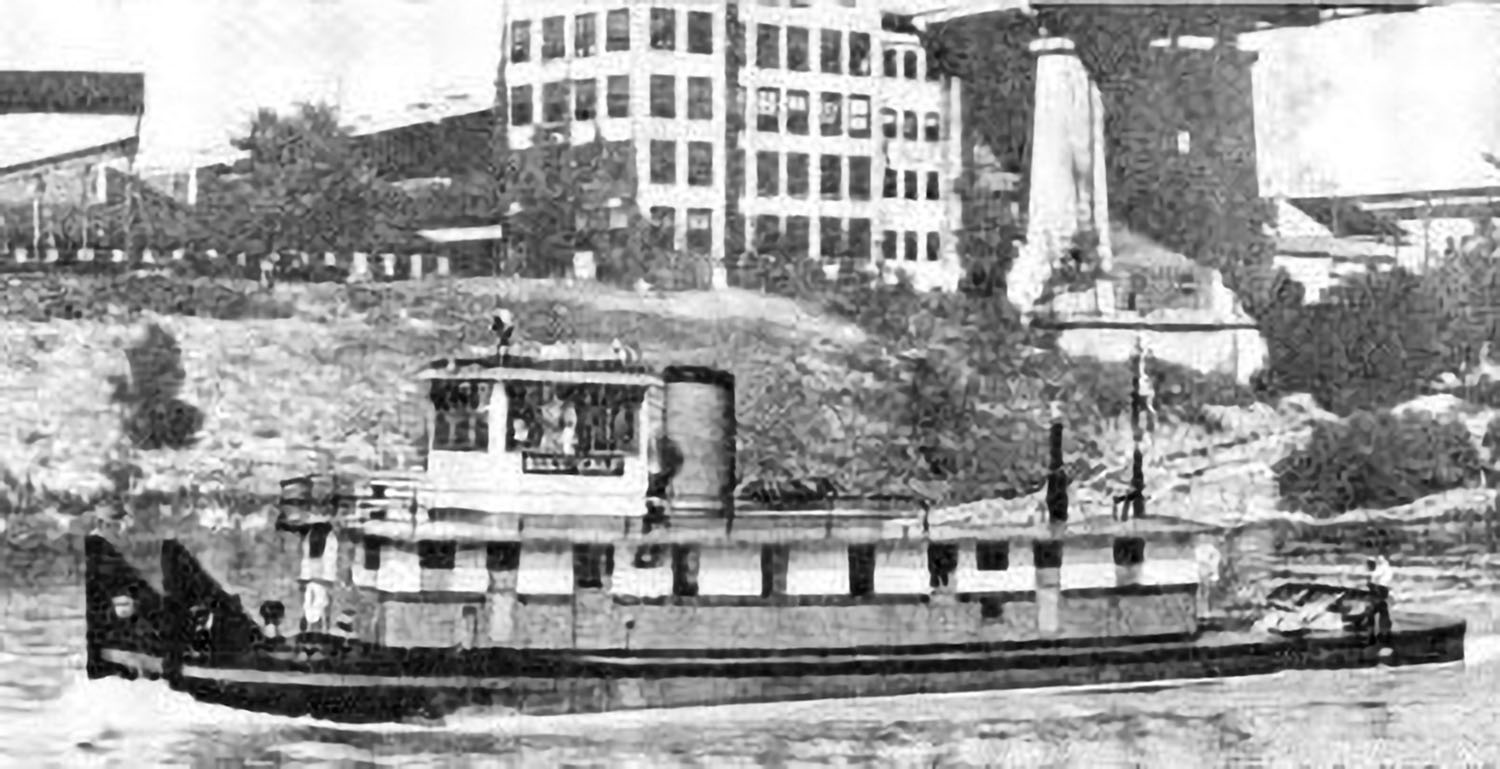One of the most significant towboats built during the 1930s was a somewhat obscure small boat crafted by the Nashville Bridge Company (Nabrico) in 1939. It was only 88 feet long by 21.5 feet wide. It had but a single cabin, with a pilothouse above that and mounted forward. A straight “stovepipe” smokestack, used by Nabrico on their boats of that era, was located behind the pilothouse. A tall mast was mounted at the after end of the cabin, and there was a long rudder deck behind the cabin.
The small boat was of all-steel construction and had a single prop. The machinery located in the engineroom is where the innovation was found. For power, the boat had the first river application of a General Motors Cleveland diesel engine. This was a relatively new engine manufacturer and was the diesel engine division of the General Motors Corporation, located in Cleveland, Ohio. The 12-cylinder engine was rated at 750 hp. at 600 rpm. At the time this was considered to be a “high speed” engine. The diesel engines that powered prop towboats then were large, slow-speed engines. Most engines in boats similar to the Bull Calf and of comparable horsepower were direct-reversing, turned about 250 rpm. and were connected directly to the shaft.
The high-speed Cleveland diesel on the Bull Calf was connected to a new clutch and gear device that had been jointly developed by the Falk Corporation and General Tire & Rubber Company. Known as an Airflex clutch and reverse gear, it allowed the engine to turn at the higher speed and in one direction, while reversing was accomplished through the rubber clutches and the gearing system. Trials were held at Nashville on June 14, 1939, and witnesses claimed that the 133-ton towboat was able to go from full ahead to full astern in just under 3 seconds. Any pilot who has handled a direct-reversible boat knows that this was quite an improvement.
At the time of the trials, it was said that the boat and machinery combination would “quickly go down in history as opening a new chapter in the successful application of high-speed engines to heavy-duty service.” A General Motors ad in the September 9, 1939, issue of The Waterways Journal featured the new Bull Calf and termed it “a towboat with showboat performance.”
The Bull Calf was owned by Canal Barge Company of New Orleans, then a fairly new concern that was founded in 1933 by Joseph Merrick Jones with one barge. The boat was designed to move tows of 40,000 barrels of petroleum between New Orleans and Memphis. In 1945, Nabrico would build a slightly larger single-screw boat for General Motors that was named Codrington in honor of GM Cleveland Diesels Vice President G.W. Codrington. This 1,200 hp. vessel was leased to Canal.
The Falk Airflex clutch did catch on with the industry, though it took some time before it was the standard. Direct-reversing towboats were still quite common on the rivers into the 1970s.
Canal rebuilt the Bull Calf in 1959, at which time it was converted to a retractable-pilothouse vessel. The stack was shortened and streamlined, and the cabin was extended back over the rudder deck. At some point, it was repowered with a GM EMD 12-567 diesel of 900 hp.

In 1961, Canal Barge had two new 4,300 hp. towboats built by Southern Shipbuilding, Slidell, La., the Leonidas Polk and Ned Merrick. At the same time the Bull Calf was transferred to Southern Shipbuilding. In 1966, it was sold to Tennemo Towing Company Inc., Caruthersville, Mo., and operated by Southern Towing Company. In 1969, it was sold to Wm. C. Ellis & Sons, Memphis. It was last listed in the combined 1988-1989 edition of the Inland River Record and was in the Off The Record section of the 1990 book, due to having not operated in several years.
According to the Canal Barge website, the company now has more than 800 barges and 43 towboats. In 1995, Canal Barge acquired the 2,100 hp. Matador XVI, which company representatives promptly renamed Bull Calf, after the innovative little boat that had done so much, both for Canal and the industry as a whole.
Caption for top photo: Bull Calf shipyard portrait used in WJ ads by Nabrico, GM and Falk. (David Smith collection)
Capt. David Smith can be contacted at davidsmith1955obc@gmail.com.




